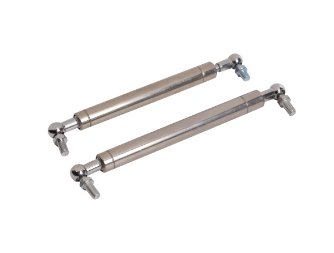If you are interested in our products ,please contact our team
Gas springs are particularly prevalent in machines and several types of furniture. They, like all springs, are intended to store mechanical power.
Gas springs, on the other hand, are distinguished by their use of gas, which is used to store mechanical power.
They are available in a variety of pressures, stroke lengths, and sizes. So, getting gas springs from a reputable manufacturer will guarantee you of purchasing a quality product.
While there are various kinds of gas springs, the majority of them are made up of the four major components listed below;
The rod is a cylindrical, solid component that is partially contained within the gas spring.
A portion of the rod is embedded within the gas spring's chamber, while the remainder of the rod juts from the gas spring.
When subjected to pressure, the rod would then move into the chamber of the gas spring.
The piston is a gas spring component connected to the rod. It is entirely contained within the gas spring. The piston, like the rod, moves in response to a force.
The piston is effectively attached to the rod's end. When the rod as well as its contacted piston are subjected to a force, they will move.
When a force is applied to a piston, it is designed to slide. They will slide as the rod recedes into the gas spring's chamber. A rod is attached to the piston inside the chamber by a gas spring.
Seals are present on all gas springs and are required to prevent leaks. Gas springs, as the name implies, contain gas.
Inert gas is contained within the chamber of a gas spring. In most cases, the inert gas is noticed around the rod or behind the piston.
When a force is applied to the gas spring, pressure is created inside. The inert gas would then condense, storing the mechanical energy of its acting force if the gas spring is completely sealed.
Just about all gas springs contain lubricating oil in addition to gas. Seals keep gas and lubricant oil from spilling out of the gas springs.
Simultaneously, they enable gas springs to stockpile mechanical energy by applying pressure within the chamber.

Ultimately, many gas springs are equipped with end attachments. End attachments also referred to as end fittings, are parts that are specifically designed to be used on the end of a gas spring's rod.
Of course, the rod is the part of the gas spring that is left vulnerable to an acting force. In some cases, an end attachment may very well be needed for the rod to operate effectively.
We sell various types of gas springs, both lockable and non-lockable. This meets the requirements of train or car manufacturers, seats, buses, and trucks, and more.
Browsing our selection of gas springs will aid you to choose the one that best suits your purpose. You can click here to check them out.